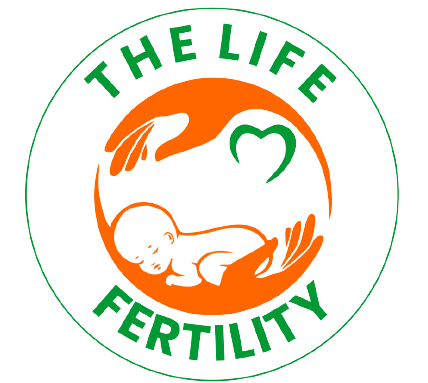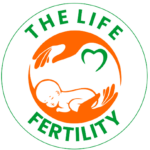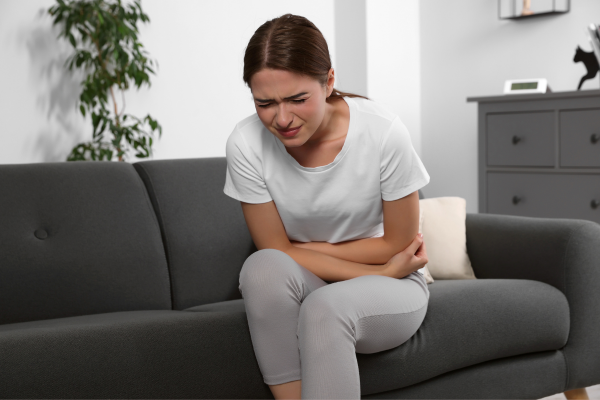Introduction
Fluid-filled sacs known as ovarian cysts form on the ovaries. They are a common condition among women of reproductive age and can vary in size and type. It is important to understand the root causes of ovarian cysts in order to effectively manage and prevent them.
The prevalence of ovarian cysts is quite high, with many women experiencing them at some point in their lives. In fact, it is estimated that around 8% of premenopausal women will have an ovarian cyst at any given time. If left untreated, some ovarian cysts can cause discomfort and complications, although most are harmless and resolve on their own.
Understanding the root causes of ovarian cysts is crucial for effective management and prevention. By identifying the underlying factors that contribute to the development of cysts, healthcare professionals can provide targeted treatments and interventions to alleviate symptoms and reduce the risk of complications.
Table of Contents
Types of Ovarian Cysts
There are several types of ovarian cysts, each with its own characteristics and potential complications.
Functional cysts are the most common type and occur as a result of the normal menstrual cycle. These cysts typically resolve spontaneously within a few menstrual cycles.
Dermoid cysts, also known as mature cystic teratomas, are another type of ovarian cyst. These cysts contain tissue such as hair, skin, and teeth, and are typically benign. However, in rare instances, they have the potential to develop into cancer.
Endometriomas are cysts that form when endometrial tissue grows outside of the uterus and attaches to the ovaries. These cysts can cause pain and fertility issues for women with endometriosis.
Cystadenomas are cysts that form from cells located on the outer surface of the ovary. They can be filled with either fluid or mucus and may grow quite large. While most cystadenomas are benign, some can be cancerous.
Symptoms of Ovarian Cysts
The symptoms of ovarian cysts can vary depending on the size and type of the cyst. Some women may experience no symptoms at all, while others may have noticeable discomfort and changes in their menstrual cycle.
Pain in the lower abdomen or pelvis is a common symptom of ovarian cysts. This pain can range from a dull ache to sharp, intense pain. Bloating is another common symptom, as the cysts can put pressure on the surrounding organs and cause fluid retention.
Changes in the menstrual cycle can also occur with ovarian cysts.Irregular periods can be experienced by some women, while others may notice variations in the amount of bleeding, either heavier or lighter than their usual flow. Difficulty urinating or bowel movements can also be a symptom, as the cysts can put pressure on the bladder or intestines.
Nausea and vomiting may occur if a cyst becomes twisted or ruptures. Severe pain can be caused by this condition, necessitating immediate medical attention.
Diagnosis of Ovarian Cysts
| Incidence | 1 in 8 women will develop an ovarian cyst at some point in their life |
| Symptoms | Abdominal pain, bloating, irregular periods, nausea, vomiting, and difficulty urinating |
| Diagnosis | Ultrasound, CT scan, MRI, blood tests, and biopsy |
| Treatment | Watchful waiting, birth control pills, surgery, and chemotherapy |
| Complications | Torsion, rupture, and cancer |
To diagnose ovarian cysts, healthcare professionals will typically perform a physical exam and order imaging tests. During the physical exam, the doctor will feel for any abnormalities in the pelvic area and ask about symptoms.
Ultrasound is commonly used to visualize the ovaries and identify any cysts present. This imaging technique utilizes sound waves to generate images of the internal organs without any invasive procedures. In some cases, a transvaginal ultrasound may be performed for a more detailed view of the ovaries.
In certain situations, a CT scan or MRI may be ordered to provide more detailed information about the cysts and surrounding structures. Blood tests may also be done to check for hormonal imbalances or markers of ovarian cancer.
Risk Factors of Causes of Ovarian Cysts
While ovarian cysts can occur in any woman of reproductive age, there are certain risk factors that may increase the likelihood of developing them. Age is a significant factor, as cysts are more common in women who are still menstruating.
The development of ovarian cysts can also be influenced by hormonal imbalances. Conditions such as polycystic ovary syndrome (PCOS) can disrupt the normal hormonal balance and lead to the formation of cysts.
A family history of ovarian cysts or ovarian cancer can increase the risk of developing cysts. Additionally, women with endometriosis, a condition where endometrial tissue grows outside of the uterus, are more likely to develop ovarian cysts.
Previous episodes of ovarian cysts can also increase the risk of future cyst development. Women who have had cysts in the past should be monitored regularly to detect any new growths.
Hormonal Imbalances and Ovarian Cysts
The development and growth of ovarian cysts are significantly influenced by hormones. Imbalances in hormone levels can disrupt the normal functioning of the ovaries and lead to the formation of cysts.
Polycystic ovary syndrome (PCOS) is a hormonal disorder that can cause multiple small cysts to develop on the ovaries. This condition is characterized by high levels of androgens, or male hormones, which can interfere with ovulation and lead to the formation of cysts.
Hormonal birth control is often used as a treatment option for ovarian cysts. By regulating hormone levels, birth control pills can help prevent the formation of new cysts and reduce the size of existing ones. However, it is important to note that birth control pills do not treat the underlying causes of ovarian cysts and should be used under medical supervision.
Genetics and Ovarian Cysts
Genetic factors may contribute to the formation of ovarian cysts. Certain gene mutations have been associated with an increased risk of developing both benign and cancerous ovarian cysts.
BRCA gene mutations, specifically BRCA1 and BRCA2, are well-known risk factors for ovarian and breast cancer. Women with these mutations have a higher likelihood of developing ovarian cysts, particularly those that are cancerous.
Lynch syndrome, also known as hereditary nonpolyposis colorectal cancer (HNPCC), is another genetic condition that can increase the risk of ovarian cysts. This syndrome is characterized by an increased risk of certain types of cancer, including ovarian cancer.
Lifestyle Factors and Ovarian Cysts
Certain lifestyle factors can also influence the development and progression of ovarian cysts. Obesity has been linked to an increased risk of ovarian cysts, as excess body fat can disrupt hormone levels and contribute to hormonal imbalances.
There is a correlation between smoking and a higher likelihood of developing ovarian cysts. The chemicals in cigarettes can interfere with hormone production and disrupt the normal functioning of the ovaries.
Diet can also play a role in the development of ovarian cysts. Consuming a diet that is rich in refined carbohydrates and sugar can result in insulin resistance, which has the potential to disturb hormone levels and play a role in the development of cysts. On the other hand, a diet rich in fruits, vegetables, and whole grains can help maintain hormonal balance and reduce the risk of cyst development.
Complications of Ovarian Cysts
While most ovarian cysts are harmless and resolve on their own, there are potential complications that can arise. Ruptured cysts occur when a cyst bursts open, causing severe pain and potentially leading to internal bleeding. This requires immediate medical attention.
Torsion is another complication that can occur with ovarian cysts. This happens when a cyst causes the ovary to twist, cutting off its blood supply. Torsion can cause severe pain and may require surgery to correct.
In rare cases, ovarian cysts can be cancerous. While most cysts are benign, it is important to monitor them for any signs of malignancy. Regular check-ups and imaging tests can help detect any changes in the cysts and ensure early intervention if necessary.
Treatment Options for Ovarian Cysts
The treatment options for ovarian cysts depend on several factors, including the size and type of the cyst, as well as the presence of symptoms. In some cases, watchful waiting may be recommended, especially if the cyst is small and not causing any discomfort.
Medications can also be used to manage ovarian cysts. Nonsteroidal anti-inflammatory drugs (NSAIDs) have the ability to alleviate pain and decrease inflammation. Hormonal birth control pills can regulate hormone levels and prevent the formation of new cysts.
Surgery may be necessary in certain situations. If a cyst is large, causing severe pain, or suspected to be cancerous, a healthcare professional may recommend surgical removal. This can be done through minimally invasive procedures such as laparoscopy or, in more complex cases, through open surgery.
Prevention of Ovarian Cysts
While it may not be possible to completely prevent ovarian cysts, there are steps that can be taken to reduce the risk of their development. Hormonal birth control methods, such as pills or intrauterine devices (IUDs), can be effective in regulating hormone levels and preventing the development of new cysts.
Maintaining a healthy weight is also important for preventing ovarian cysts. Obesity has been linked to an increased risk of cyst development, so adopting a balanced diet and engaging in regular exercise can help maintain hormonal balance and reduce the risk.
Quitting smoking is another important step in preventing ovarian cysts. The chemicals in cigarettes can disrupt hormone production and increase the risk of cyst formation. By quitting smoking, women can reduce their risk and improve their overall health.
Understanding the root causes of ovarian cysts is crucial for prevention and treatment. By identifying the underlying factors that contribute to the development of cysts, healthcare professionals can provide targeted treatments and interventions to alleviate symptoms and reduce the risk of complications.
Lifestyle changes, such as maintaining a healthy weight, regular exercise, and quitting smoking, can help reduce the risk of ovarian cysts. Additionally, hormonal birth control methods can be used to regulate hormone levels and prevent the formation of new cysts.
In cases where cysts are causing significant pain or are suspected to be cancerous, medical interventions such as medications or surgery may be necessary. Regular check-ups and imaging tests can help monitor the cysts and detect any changes that may require intervention.
Overall, a comprehensive approach that combines lifestyle modifications with medical interventions can help manage ovarian cysts and prevent complications. By understanding the root causes and taking proactive steps, women can take control of their health and reduce the impact of ovarian cysts on their lives.
Conclusion
In conclusion, ovarian cysts are common occurrences in women of reproductive age. While most cysts are harmless and resolve on their own, some can cause complications and require medical intervention. Understanding the risk factors that contribute to the development of ovarian cysts can help women take proactive steps to prevent or manage this condition. By maintaining a healthy lifestyle, seeking regular gynecological check-ups, and being aware of any changes in their bodies, women can reduce their risk of developing ovarian cysts and ensure early detection and treatment if necessary.




